Ansys Customization Toolkit

Ansys è un prodotto Ansys Inc.

Ansys è un prodotto Ansys Inc.
Ansys Customization Toolkit, o più sinteticamente ACT, è una tecnologia che permette di sviluppare ed utilizzare delle customizzazioni - o estensioni - per le diverse piattaforme di simulazione Ansys (Mechanical, Fluent, Maxwell, Electronics Desktop, ecc.) al fine di estenderne le funzionalità.
Le tecnologie Ansys permettono di eseguire di default numerose tipologie di attività e simulazioni. Per includere delle nuove feature utili all’utente per una specifica attività è possibile sfruttare le potenzialità della console ACT, basata sul linguaggio di programmazione Python.
Alcuni esempi pratici: ACT permette all’utente di utilizzare delle speciali “wizard” in grado di creare in modo automatico un profilo NACA, eseguire una verifica strutturale in conformità con la normativa ASME o Eurocodice, studiare fenomeni acustici avanzati, simulare il processo di formatura di un cordone di saldatura, e molto altro ancora.
Tutte le estensioni ACT vengono installate dall’interfaccia Ansys Workbench e possono essere scaricate dall’Ansys App Store: catalog.ansys.com
Richiedi una demo gratuita
Invia le tue domande ai nostri tecnici specializzati!
Mettiti in contatto con uno dei nostri esperti, che ti potrà fornire risposte certe o consigliare soluzioni affidabili.
CASE STUDY
A lot of steel structures such as cranes, heavy machinery and other equipment subjected to repetitive loading is highly likely to develop cracks or failures because of the fatigue damage. The cost of every hour of equipment downtime is usually very expensive, making it mandatory to perform residual life calculations or fatigue checks.
ansys energy
CASE STUDY
This analysis attempts to understand the behavior of sticky detergent powders according to flow velocity using Rocky-Ansys Fluent two-way coupling.
consumer-goods rocky ansys
Our competences in Ansys Customization Toolkit
CASE STUDY
This technical article describes a numerical (transient computational fluid dynamics) simulation applied to study the suction efficiency of a canopy hood in a steel plant’s electric arc furnace with a view to increasing it.
ansys energy
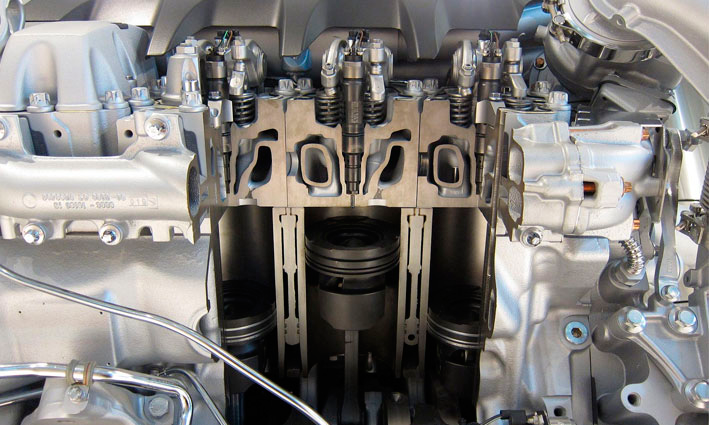
CASE STUDY
The model contains both rigid and flexible bodies: the pin was modelled using the proprietary Full Flex technology which includes a Finite Element body in the dynamic simulation.
recurdyn mbd-ansys automotive multibody
CASE STUDY
This technical article describes how CFD analysis minimizes trial and error activities and costs and improves RFT – “right first time” – results.
consumer-goods cfd furniture ansys

CASE STUDY
Today, numerical simulation and experimental testing are used to qualify products in different stages of the development process.
rail-transport ansys recurdyn
CASE STUDY
This article proposes the use of computational fluid dynamics (CFD) to address these complexities.
ansys mechanics

CASE STUDY
The avoidance or reduction of chainsaw kickback is a key safety feature for manufacturers. The challenges for engineers are to obtain more accurate analyses of the problem over the tool’s lifecycle.
maplesim maple mechanics ansys consumer-goods

CASE STUDY
EnginSoft implemented a new 3D CFD multi-phase model to simulate the water condensation-evaporation processes inside automotive headlamps for Automotive Lighting, a leading supplier of quality headlights to the OEM market
automotive cfd ansys rail-transport
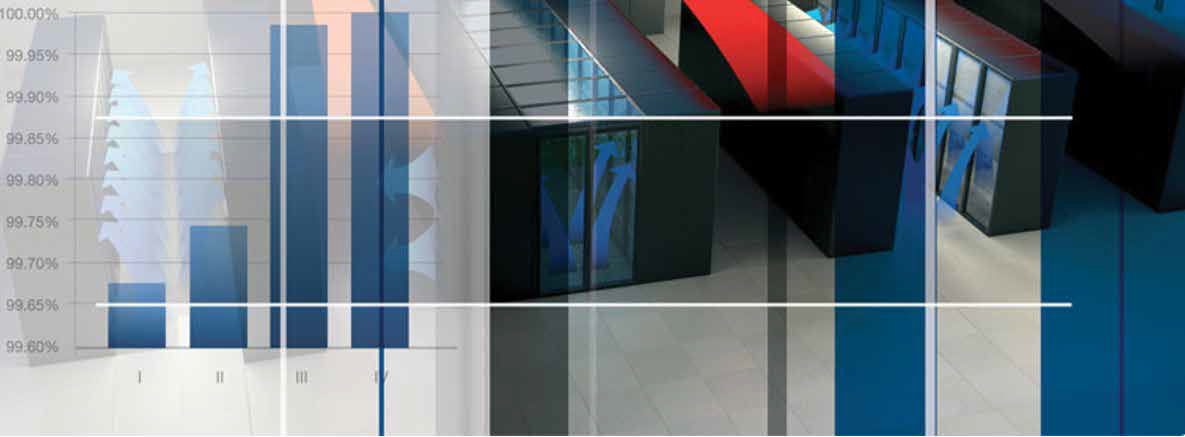
CASE STUDY
The objective of the study was to create a virtual model of Climaveneta’s new ACU171 Expanded Close Control Unit and then match the numerical results with the experimental measures.
cfd ansys appliances
CASE STUDY
Mesh morphing has proven to be a valuable tool in parametrizing numerical models to perform shape optimization. It allows engineers to save time in generating new configurations for analysis because it does not require geometry modification and mesh re-generation.
ansys mechanics
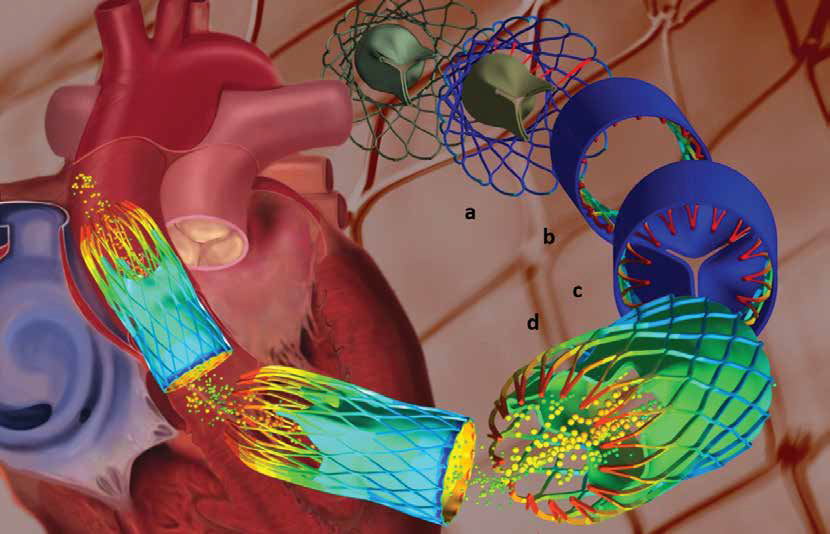
CASE STUDY
Since this cannot be accurately measured in an implanted stent, manufacturers decided to use Multiphysics to simulate the process to better understand the method and to calculate the forces operating on the implant in order to improve the stent design and the surgical procedure, as described in this article.
cfd biomechanics ansys

CASE STUDY
This article describes the preliminary study resulting in the design solutions adopted for the LAD module’s most important thermo-mechanical drivers, which were developed and used to demonstrate compliance with the system requirements at the spacecraft level.
aerospace rbf-morph ansys
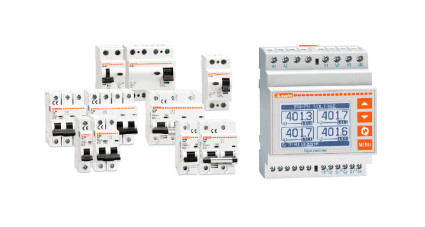
CASE STUDY
Lovato Electric is committed to delivering innovation through its products and so it commissioned EnginSoft to help it create a pilot project in order to compare and finally select an electromagnetic field simulation software solution.
ansys electronics

CASE STUDY
The aim of this study was to reduce the weight of the world’s tallest aluminum mast for a new series of single mast sailing yachts manufactured by Perini Navi under the brand name Salute.
optimization modefrontier ansys marine rail-transport
CASE STUDY
This paper, by means of presenting three application cases, provides a brief description of the capabilities of a numerical tool developed for the design and optimization of hybrid metal/composite lattice structures created with 3D printing
ansys composites
CASE STUDY
This article details a study that was undertaken by Castel, a producer of refrigeration and air conditioning components, to compare the results of an experimental method for testing expansion valves with a numerical method using Ansys.
ansys energy

CASE STUDY
This article describes how SAER ELETTROPOMPE used Ansys CFX to transform "standard" pumps into pumps to be used as turbines.
energy ansys cfd

CASE STUDY
Racing engines are continuously evolved and fine-tuned to allow them to achieve extraordinary levels of performance, albeit with great complexity. However, MotoGP regulations restrict engine development by constraining some of the main design parameters.
optimization modefrontier cfd ansys rail-transport

CASE STUDY
Faber Spa, which has designed and manufactured ventilation hoods for the past 50 years, holds a key global position both in terms of production and technology. It has achieved this position through strategic investments in research and development.
ansys appliances consumer-goods cfd
CASE STUDY
With GENESIS or GSAM optimization tools, you can maximize additive manufacturing’s potential.
additive-manufacturing gtam-gsam ansys

CASE STUDY
The bridge represents an example of a cable stayed mixed steel-concrete structure, where the stay cables are asymmetrically connected to the center of the deck and to the top of the central transverse steel arch.
construction civil-engineering ansys straus7
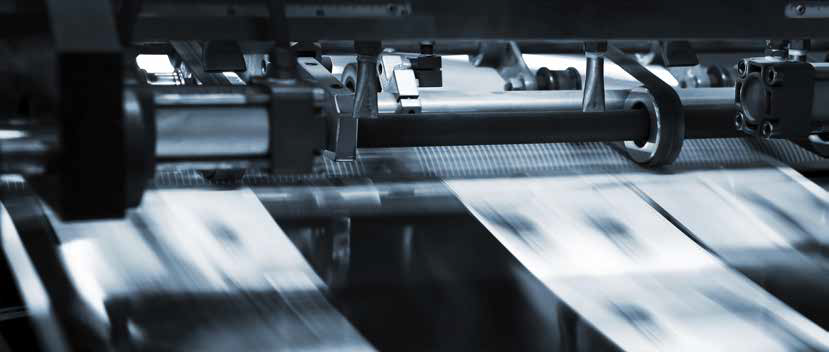
CASE STUDY
In this article, Uteco describes how it applied Computational Fluid Dynamics (CFD) to assist the design and improvement of its printing machines.
cfd ansys mechanics

CASE STUDY
This technical article describes how high-end numerical Computational Fluid Dynamics (CFD) simulations were applied to mimic the realistic operating conditions of a Ventricular Assist Device (VADs) and analyze its hemodynamics in order to identify potential areas for optimization of the device’s performance, safety and efficacy.
ansys cfd biomechanics
CASE STUDY
This article examines the simulation of an RCD to determine the factors that affect its response times.
appliances ansys cetol recurdyn tolerances
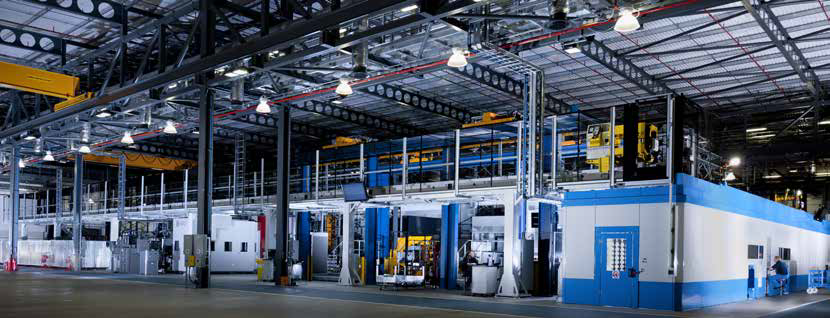
CASE STUDY
Nederman’s Air Purification Tower is the perfect choice if source extraction is not a satisfying option.
ansys mechanics
CASE STUDY
This technical article describes an acoustic emissions study conducted on an electric water circulation pump used for supplementary cooling or heating functions in vehicles, by the Modeling & Simulation Pumps Department of Pierburg Pump Technology
acoustic ansys mechanics
CASE STUDY
Marelli Motori engineers use Ansys multiphysics solutions to custom-design motors and generators to solve challenges in hydropower, cogeneration, oil and gas, civil and commercial marine transport, military applications, and ATEX applications involving motors and generators in explosive atmospheres, among other applications.
automotive ansys energy
CASE STUDY
A lot of steel structures such as cranes, heavy machinery and other equipment subjected to repetitive loading is highly likely to develop cracks or failures because of the fatigue damage. The cost of every hour of equipment downtime is usually very expensive, making it mandatory to perform residual life calculations or fatigue checks.
ansys energy

CASE STUDY
In this article, we present a procedure to investigate the thermo-mechanical effects produced by the particles of an extremely focused beam hitting a material target spot.
ansys

CASE STUDY
The study analyzed these structures for strength, service and stability conditions before construction.
civil-engineering construction ansys

CASE STUDY
By taking advantage of EnginSoft experience in Simulation Based Engineering, by means of the FEM analysis, the Durability, Structural Integrity and Buckling behavior of a new group of toxic liquid and fuel storage tanks have been investigated.
energy mechanics ansys

CASE STUDY
Engineers will normally need to evaluate a number of different designs, only one of which will result in the final construction configuration. This is why numerical simulation plays an indispensible role in roller coaster design.
ansys civil-engineering construction
CASE STUDY
The Extremely Large Telescope (ELT) is a 40m-class optical and infrared telescope being built in Chile. The ELT has a complex geometry, with a rotating structure and a dome that must be protected from wind effects to ensure accurate observations. To study the wind flow within the dome, a computational fluid dynamics (CFD) model was created.
civil-engineering cfd ansys

CASE STUDY
This study was part of the Virtual Optimization PAsta production process (OPAV) research project,
modefrontier ansys ls-dyna magma optimization food-beverage consumer-goods
CASE STUDY
This work presents the CFD model of an axial piston pump and compares it to a validated 0D model. The main objective of this study was to analyze the flow field inside the pump, focusing on the aspects that involved the main inner volumes, such as the filling and emptying dynamics in the piston chambers and the flow field inside the ducts.
ansys cfd energy

CASE STUDY
Today the numerical simulation offers an important added value for dimensioning and testing of the motorbike’s chassis.
rail-transport ansys
CASE STUDY
This paper presents the design and first experimental results of a very compact Ku-band bandpass filter for high power satellite applications. The filter was designed and simulated using the Ansys HFSS and Mechanical simulators. Proposed as part of an ESA ARTES Advanced Technology project, the filter is based on dielectric loaded combline resonators.
ansys electronics aerospace
CASE STUDY
This article discusses the use of the Ansys HFSS SBR+ method for wave propagation analysis that is based on specific EM propagation formulations (commonly referred to as Asymptotic Methods), and which offers an effective alternative in terms of solution accuracy and computational cost. The method’s effectiveness is demonstrated in this case study that considers the analysis of an ESM sinuous antenna installed on an avionics platform.
ansys electronics

CASE STUDY
This technical article presents a study to design a device that operates entirely on the principle of trapped vortices that intrinsically improve the mixing of hot combustion gases with fresh mixture, a characteristic that is essential both to diluted combustion and to Moderate or Intense Low-oxygen Dilution (MILD) combustion.
ansys cfd turbomachinery energy oil-gas

CASE STUDY
This article describes how the company created and tested a process to construct a parametric CAD model capable of providing its designers with a starting point for any new machine to be designed.
mechanics ansys modefrontier maplesim maple

CASE STUDY
The challenge was to find the optimal aerodynamic design while substantially reducing the costs associated with traditional CFD modeling.
aerospace cfd ansys
CASE STUDY
This paper demonstrates how the biological growth method, studied by Mattheck in the 1990s, can be easily implemented for structural shape optimization finite element method (FEM) analyses using advanced radial basis functions (RBF) mesh morphing.
ansys biomechanics rbf-morph
CASE STUDY
This study discusses the complex and challenging problem of controlling vortex-induced vibrations (VIV).
cfd mechanics ansys rbf-morph

CASE STUDY
Traditional naval architecture meets the CFD analysis with the aim to improve consolidated products reaching values in terms of performance never seen before.
ansys cfd marine
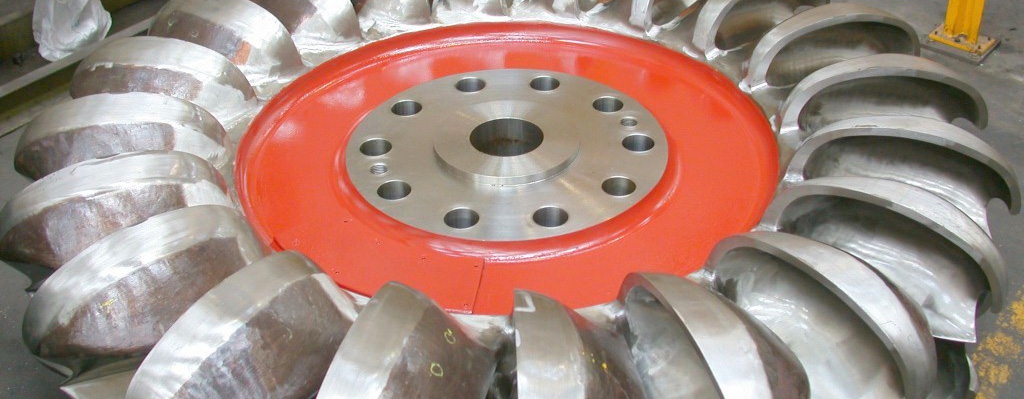
CASE STUDY
EnginSoft developed a Computational Fluid Dynamic (CFD) analysis methodology for the performance evaluation of a Pelton turbine
energy cfd ansys oil-gas
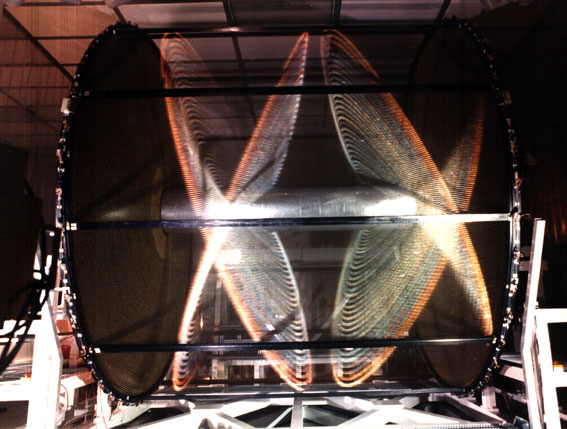
CASE STUDY
The ultimate goal of the study was to optimize the Drift Chamber’s performance in terms of stiffness, strength and weight o be mounted on the Mu2e particle detector at FermiLAB in Chicago
construction modefrontier ansys optimization energy
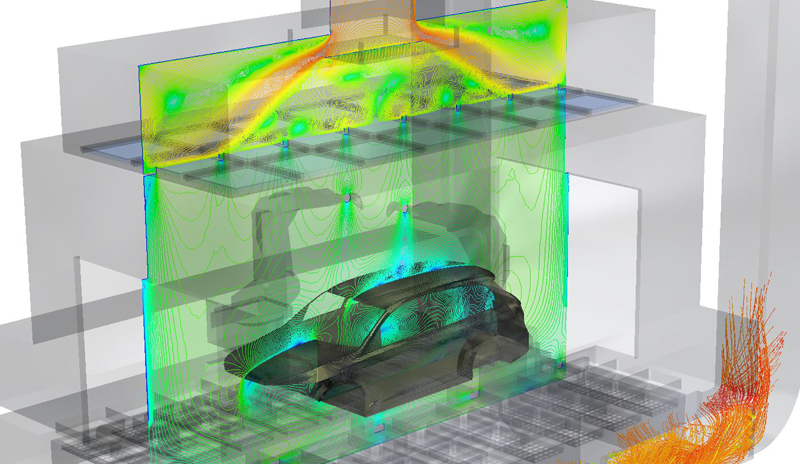
CASE STUDY
Overspray is a key problem in the paint application process. This phenomenon is caused by inefficiencies of the robots inside the spray booth and can best be solved by balancing the air flow properly in the paint application area.
automotive ansys cfd
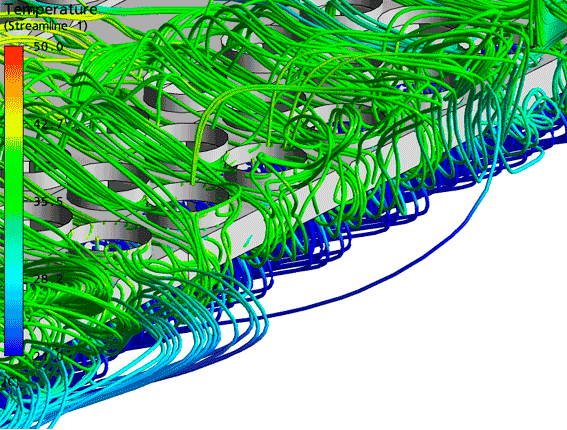
CASE STUDY
EnginSoft developed a 3D CFD model of a Liquefied Natural Gas (LNG) Plant for the simulation of the Air-Cooled Heat Exchanger Systems’ (ACHE) arrays and their interaction with the wind.
energy cfd ansys oil-gas
CASE STUDY
The study described in this article was designed to obtain greater insight into the gas transfer mechanism at microscopic scale using computational fluid dynamics in order to accelerate design exploration to find the optimal solution.
biomechanics ansys
CASE STUDY
This article describes the Multiphysics optimization procedure undertaken to ensure the best compromise between electromagnetic and structural compliance for the Toroidal Field coils of the Advanced Divertor Configurations of the toroidal chamber, that holds the plasma in which the fusion reaction takes place.
energy ansys rbf-morph

CASE STUDY
This project has been coordinated by the German Aerospace Center (DLR) and it is embedded in the MELiSSA framework of ESA research projects.
aerospace cfd ansys
CASE STUDY
This technical paper presents an analysis process to accurately examine the environmental loads and structural stability of a Floating photovoltaic (PV) power plant. The method includes a hydrodynamic analysis of the Floating PV in its water-based environment as well as a structural analysis of its structural stability based on the characteristics of motion it undergoes.
ansys energy
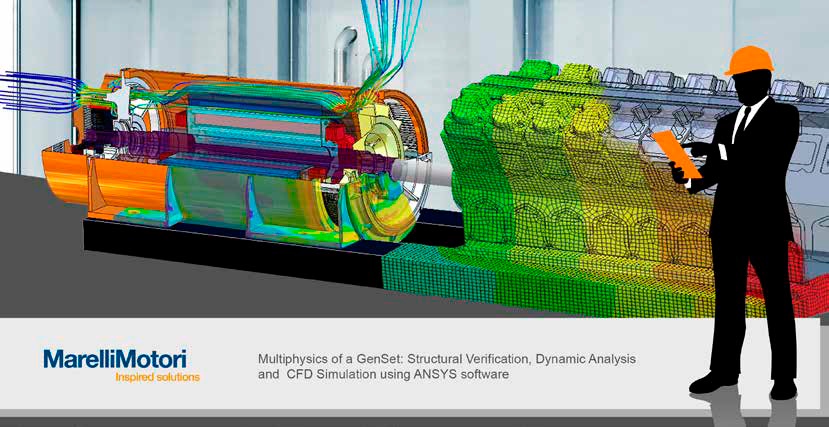
CASE STUDY
Improving efficiency while reducing cost is a very complex engineering challenge. Marelli Motori makes extensive use of CFD and FEM multiphysics simulation to do just that in the design of its electrical motors and generators.
ansys automotive cfd

CASE STUDY
Sport equipment design is characterized by the fact that a fundamental part of a product success depends on the athlete’s feedback.
sports modefrontier ansys ls-dyna
CASE STUDY
EnginSoft’s cost-effective solution was successfully created in collaboration with F4E’s expert teams after numerous years spent developing and testing tools, algorithms and customized interfaces in each phase of the Electromagnetic FEM analysis workflow.
energy ansys electronics

CASE STUDY
This article is based on a collaboration between RBF Morph and AVIO to configure a numerical optimization procedure to improve the Vega E M10 engine’s performance by optimizing the methane circuit of the injector head.
aerospace rbf-morph ansys meshing
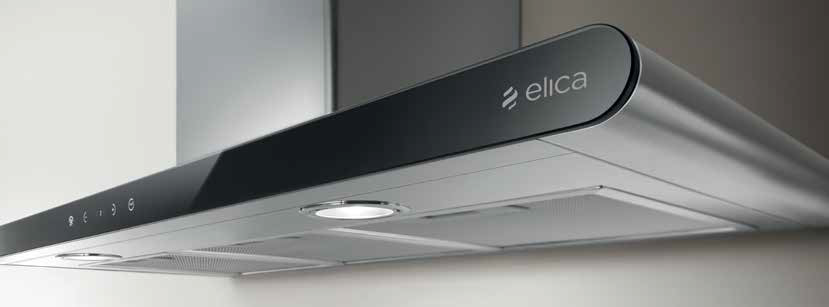
CASE STUDY
This article presents a study that the Elica Group commissioned from EnginSoft to support it engineering team in redesigning the ventilation system of its “Tilly” kitchen hood model
appliances ansys cfd

CASE STUDY
This case study describes how the company’s R&D team used ANYSYS and Spaceclaim to conduct Finite Element Method analyses to refine the design of a new model of a sprayer boom used by farmers to distribute phytosanitary products over fields for crop protection.
ansys automotive rail-transport
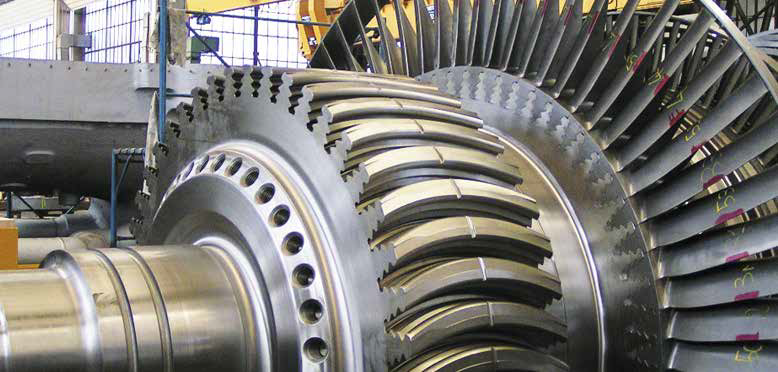
CASE STUDY
This case study details the design optimization of an axial steam turbine of 160 MW, focusing on maximizing the total-to-total isentropic efficiency of the last three low-pressure stages of the turbine.
cfd ansys turbomachinery modefrontier
CASE STUDY
The ITER reactor’s electron cyclotron heating and current drive (EC H&CD) system launcher requires an effective cooling system due to the strong thermal loads it supports. In supporting the design of this cooling system, NINE performed several numerical studies using the Ansys simulation tools
ansys energy

CASE STUDY
This is a classic scenario that exploits the best features of RecurDyn software, such as the Full-Flex and the Geo-Contact technology.
recurdyn multibody mbd-ansys
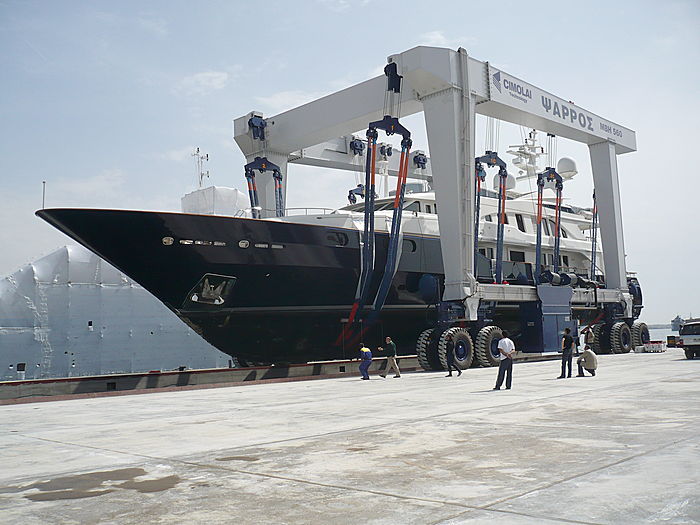
CASE STUDY
Cimolai Technology explains the business benefits it has achieved since the installation in terms of time savings in planning, and design, and improvements in product quality and in delivery forecast ability.
ansys mechanics rail-transport marine

CASE STUDY
In this technical article, the authors discuss the development of CAE models for simulating the behavior of shaped charges, devices used in various industrial sectors, against two types of target – a monolithic steel target and a multi-layer steel-ceramic target – in order to better understand the physics of penetration.
ansys ls-dyna civil-engineering mechanics oil-gas
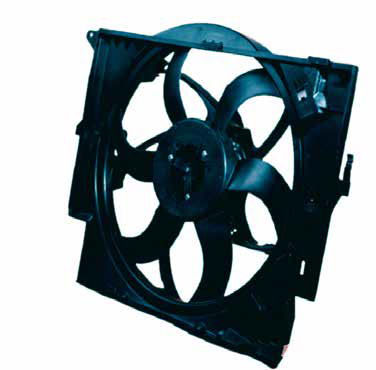
CASE STUDY
ptimization of the product starts with a strong correlation of the model with specifically designed tests under controlled conditions.
ansys automotive

CASE STUDY
GE Power is a world leading supplier of solutions for power generation, from engineering to manufacturing. Detecting and mitigating critical flow structures in water pumping stations is a complex engineering task, that has always been based on experimental activities. Now GE Power can rely also on CFD modelling and on the support of EnginSoft
ansys cfd energy

CASE STUDY
Oil or gas pipelines that cover long distances pose complex design challenges. Every environment the pipeline crosses is characterized by different potential geohazards. One of the most dangerous for a pipeline is a rockfall.
oil-gas mechanics ansys
CASE STUDY
The growth of technology and end-user expectations is ever more important in many application areas and medical devices are at the forefront of this innovation process.
ansys electronics

CASE STUDY
Dynamic studies are required to predict the accelerations, verify that the cams are properly shaped, and to extract the loads to structurally size the parts.
recurdyn multibody mbd-ansys automotive
CASE STUDY
Gamma Meccanica’s R&D department is constantly researching new solutions to improve the overall performance of equipment, production capacity and reliability while developing environmentally sustainable processes and applications to benefit its customers.
cfd mechanics ansys
CASE STUDY
This article presents an example of the analysis of a powder composed of spherical particles. Since powders have a very fine heterogeneous structure, a multi-scale approach based on homogenization analysis is proposed.
multiscale ansys mechanics

CASE STUDY
Vin Service, founded in 1976, is a world leader in dispenser technology and the first Italian manufacturer of draft-wine dispensers. Its core business is in the dispensing equipment industry and in cooling systems for beverages.
ansys mechanics food-beverage
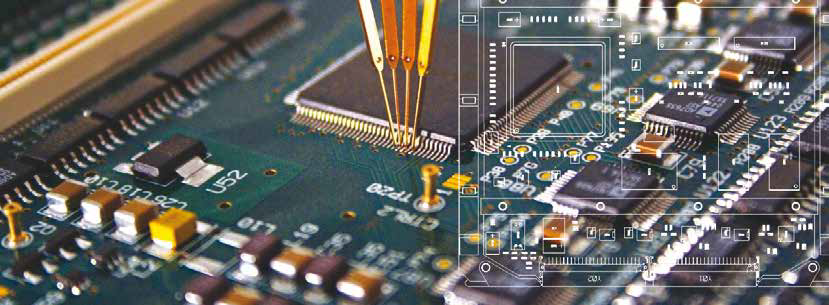
CASE STUDY
Simulation is nowadays strongly connected to new product development in most high-technology industries.
ansys electronics

CASE STUDY
Two main reasons have been the drivers for introducing and using CAE simulation technologies and mathematical modeling: safety and achieving optimal design.
ansys energy

CASE STUDY
The connecting rod is one of the most important components in powertrain systems, so it requires very careful structural analyses because its failure implies serious damage to the entire engine.
automotive ansys rail-transport
CASE STUDY
This technical article discusses some of the problems of using finite element method (FEM) simulation software for composite material analysis and introduces new solutions from CYBERNET with Ansys Software for solving these problems.
composites ansys multiscale

CASE STUDY
In this interview, engineer Luca Cavalli, of Immergas’ advanced engineering team, discusses the technical and business benefits the company has realised since first introducing Computer-Aided Engineering (CAE) technologies into its R&D department in 1997.
ansys appliances cfd mechanics

CASE STUDY
At this particular moment in time, this article wishes to reflect on the evolution of CAE and simulation in an effort to present a big-picture view when most of us are daily dealing with all the devil in the details in every aspect of our lives. We approached some long-standing business friends in engineering simulation from various regions around the world to help us in this task
ansys industry4 news
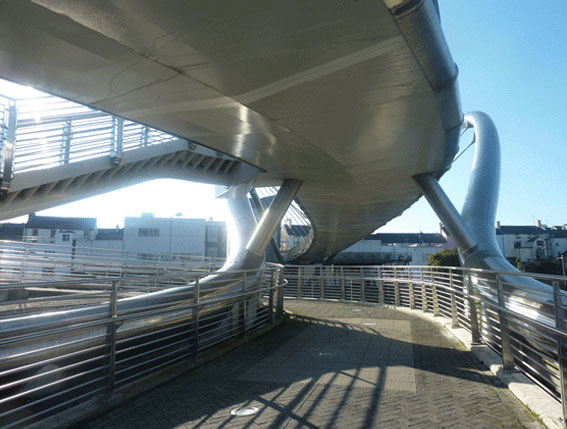
CASE STUDY
The footbridge is supported by two cable-stayed, stainless steel arches lying on inclined planes, supporting a steel deck with concrete infill.
civil-engineering ansys construction straus7

CASE STUDY
This technical article details the application of the methodology developed using ANSYS WorkBench
ansys mechanics maplesim

CASE STUDY
Further reduction of the heat loss compared to the best design of the NSGA-II first phase design optimization: a further 4% gained
cfd biomechanics ansys modefrontier optimization
CASE STUDY
This analysis attempts to understand the behavior of sticky detergent powders according to flow velocity using Rocky-Ansys Fluent two-way coupling.
consumer-goods rocky ansys

CASE STUDY
In this technical case study, EnginSoft was called in to assist in the application of Computational Fluid Dynamics (CFD) to model the flame size of a regeneration gas-fired heater for a project in Oman.
ansys mechanics energy oil-gas

CASE STUDY
This article describes how EnginSoft applied a Computational Fluid Dynamics (CFD) analysis, on behalf of Whirlpool EMEA, to simulate three different geometrical design modifications to the vacuum cleaner head to improve on a baseline performance that was modelled first.
appliances cfd ansys
CASE STUDY
This technical article describes a project that was undertaken by TAE SUNG Software and Engineering, in collaboration with DY AUTO in Korea, to establish a computerized process to conduct three-dimensional real-scale analysis of any of the three types of windshield wiper currently in use, and to establish a specific standard for evaluating wiper performance.
automotive ls-dyna ansys
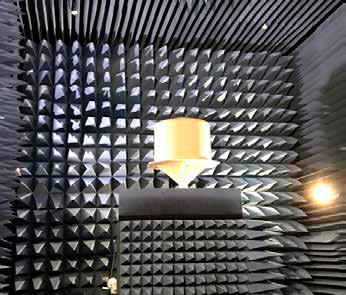
CASE STUDY
Elettronica SpA designs and produces systems for electronic warfare. Each system design is unique according to its platform and purpose. In this article, the company describes how it used CAE to approach the challenging design of a single sandwich radome.
ansys optimization electronics
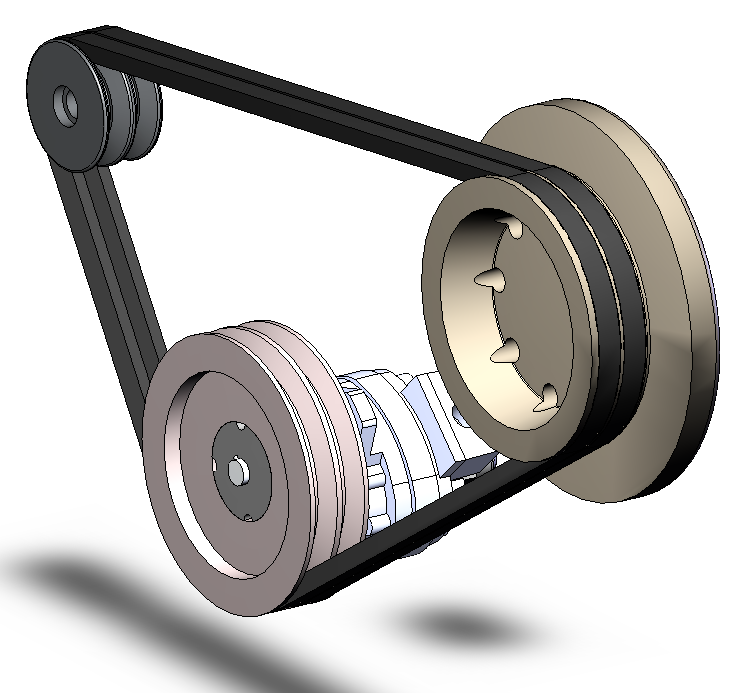
CASE STUDY
A virtual prototype of a belt must necessarily include the high flexibility of the belt itself, as well as a detailed description of the contacts. This is another scenario where RecurDyn provides better functionality than its competitors.
multibody mbd-ansys recurdyn
CASE STUDY
In this technical article, a CFD study of various designs for four different specialty tractors: two brands of specialty tractors for vineyard configurations, and two brands of specialty tractors for orchard configurations, are described.
automotive ansys cfd
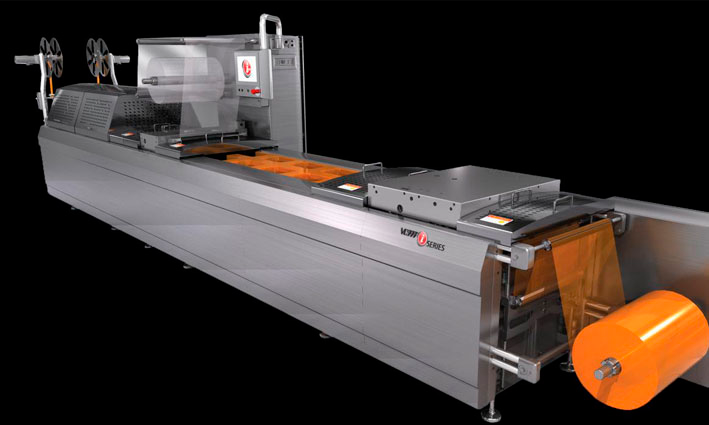
CASE STUDY
In this example, these features were tested by simulating the motion of a very thin plastic film (32µm) being dragged by two rollers.
recurdyn mbd-ansys mechanics multibody